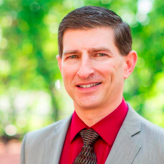Chief Investment Strategist, Investing Daily
Contributor's Links:
Forbes R-Squared Energy Investing Daily
Robert is no armchair analysthe has two decades of in-the-trenches experience in a wide range of fossil fuel and biofuel technologies, including refining, natural gas production, gas-to-liquids, ethanol production and butanol production.
During a six-year stretch at ConocoPhillips, Robert ran a ...more
Robert is no armchair analysthe has two decades of in-the-trenches experience in a wide range of fossil fuel and biofuel technologies, including refining, natural gas production, gas-to-liquids, ethanol production and butanol production.
During a six-year stretch at ConocoPhillips, Robert ran a team of engineers in Scotland working on oil and gas projects in the North Sea.
For two years, Robert was an efficiency expert in a Texas petrochemical plant. The process changes he implemented saved the facility $9 million a year. He later worked as the Engineering Director for a Dutch environmental-technology company and provided engineering support for a Chinese facility the company was constructing.
Robert was also a butanol engineer in Germany for the Celanese Corporation, where he designed a novel butanol unit that cut production costs by $5 million per year.
In all, Robert has spent more than a dozen years working on liquid fuels technologies. Along the way hes picked up five patents, including one for a breakthrough way to convert ethane into ethylene (U.S. Patent 7,074,977).
Now, in addition to guiding readers to timely energy plays inUtility Forecaster, Robert travels the world evaluating startup energy companies for deep-pocketed investors. After grilling management and assessing the technology on-site, he makes a go/no-go investment decision. His wealthy private investors and hedge fund backers trust him to make the right choice for the same reason we do: his vast real-world experience in just about every facet of the energy industry. If Robert votes thumbs-up, millions of dollars flow into these cutting-edge outfits.
Robert earned his master of science in chemical engineering and a bachelor of science in chemistry and mathematics (double major) at Texas AM University. He tells us he was this close to finishing his Ph.D. before he decided he was having a lot more fun making money in energy stocks.
A prolific writer, Roberts articles have appeared inForbes,The Wall Street Journal,The Washington Postand theChristian Science Monitor --and he has been a featured expert on60 MinutesandThe History Channel. His new book,Power Plays: Energy Options in the Age of Peak Oil(Apress, 2012), helps investors sort through doom and gloom, hype and misinformation to understand the true costs, benefits and trade-offs for each of our major energy options.
In what little spare time he has left, Robert consults for a number of energy projects, including biodiesel, ethanol, butanol and biomass gasification facilities.less



Latest Comments
Why The Shale Boom Left California Behind
It would be possible to inject the water deeper, but they don't do it for economic reasons. But there are places where the fault is near the oil-producing zone. In those cases, it's the fracking that can directly cause an earthquake. Not sure of the situation in California, but it would in any case be a touchy subject.
Why The Shale Boom Left California Behind
I actually discuss this in the presentation. I didn't get into it here, because it requires a bit more nuance than "fracking causes earthquakes." So in the presentation I explain that most of the earthquakes in Oklahoma are a result of wastewater injection, but fracking itself has been implicated in some earthquakes (a small portion in Oklahoma) but a higher percentage in other shale plays. I just didn't want to get into all that in this article.